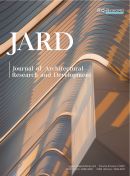Abstract
The impermeability of concrete of the exterior wall of the underground tunnel in water-rich stratum is a key concern of engineers. Taking the Aixihu highway tunnel in Nanchang city as an example, the impermeability of the concrete in the side wall of the highway tunnel is tested, through multiple tests, such as the embedded steel pipe, water injection, and field observation. The results show that, under the action of 2mpa of water pressure, no water flow permeates from the side wall of the concrete tunnel, indicating that the impermeable performance of concrete tunnel in this section meets the engineering requirements, and hoping that this research can be used as a reference for other similar projects.
References
Teng Z, 2021, Application of Waterproof and Seepage Prevention Construction Technology in Highway Tunnel Engineering. Traffic is the World, 2021(8): 2.
Wang S, 2020, Cause Analysis and Treatment Technology of Water Seepage in Highway Tunnel. Construction Materials & Decoration, 610(13): 249-250.
Ouyang Y, 2018, Highway Tunnel Construction Waterproof Technology in the Analysis of the Application. Jiangxi Building Materials, 2018(07): 65-66.
Guo H, Guo H, 2017, Application Research of Waterproof Technology in Highway Tunnel Construction. Theoretical Research of Urban Construction (Electronic Edition), 2017(13): 152-153.
Guo Y, Wang A, Jiang M, Analysis of Seepage Field in Shallow Underwater Parallel Tunnel with Double Holes. Chinese Journal of Geotechnical Engineering, 43(06): 1088-1096 (in Chinese).
Lin L, 2020, Study on Construction Technology of Comprehensive System of Highway Undersea Tunnel. Construction Technology, 49(19): 5 (in Chinese).
Wang H, Liu G, Wang J, et al., Analysis on Seepage Field Characteristics of Shaoquan Lake Tunnel Engineering. Pearl River, 42(10): 63-67.
Mao Z, Tuo S, 2004, Construction Technology of Shallow Lakeside Tunnel Structure. Subgrade Engineering, 2004(06): 12-14.
Yang Q, Liu D, Sheng CY, et al., 2002, Spray Film Waterproof Technology for Tunnel and Underground Engineering. Journal of The China Railway Society, 2002(02): 83-88.
Yang Q, Liu D, Sheng C, 2003, Study on Spraying Film Waterproof Technology of Underground Engineering. New Building Materials, 2003(03): 33-36.
Wang T, Han X, Qian Z, 2008, Analysis of Seepage Caused by Seepage in Tunnel Engineering. Journal of Underground Space and Engineering, 2008(03): 420-424.
Ding H, Jiang S, Li Y, 2007. Chinese Journal of Geotechnical Engineering, 2007(09): 1398-1403.
Wang J, 2008, Problems on External Water Pressure on Tunnel Lining. Railway Construction Technology, 2008(02): 1-6.
Wu Q, 2018, Waterproofing Scheme Optimization and Construction Technology for Open Cutting Lake Bottom Tunnel. Railway Construction Technology, 2018(09): 80-83.
Lu M, 2020, Design Optimization of Membrane Waterproofing and Joint Waterproofing of Cut and Cover Tunnel. Construction Technology, 49(21): 24-28.
Zhang G, 2019, Research on Waterproof Performance Optimization of Open-Cut Tunnel Structure with High Water Level Under Strong Permeable Environment. Decision Exploration (Middle), 2019(02): 46-49.
Chulkov ??, Commier A, Pradere C, et al., 2021, Analyzing Efficiency of Optical and Thz Infrared Thermography in Nondestructive Testing of Gfrps by Using the Tanimoto Criterion. NDT & E International, 2021(117): 102383.
Kim SC, Park C, Kang CG, et al., 2020, Evaluation of the Characteristics of the Reflection Plate to Measure Defects in the Invisible Area Using Infrared Thermography. Nuclear Engineering and Technology, 52(4): 856-862.
Konishi S, Kawakami K, Taguchi M, 2016, Inspection Method with Infrared Thermometry for Detect Void in Subway Tunnel Lining. Procedia Engineering, 2016(165): 474-483.
